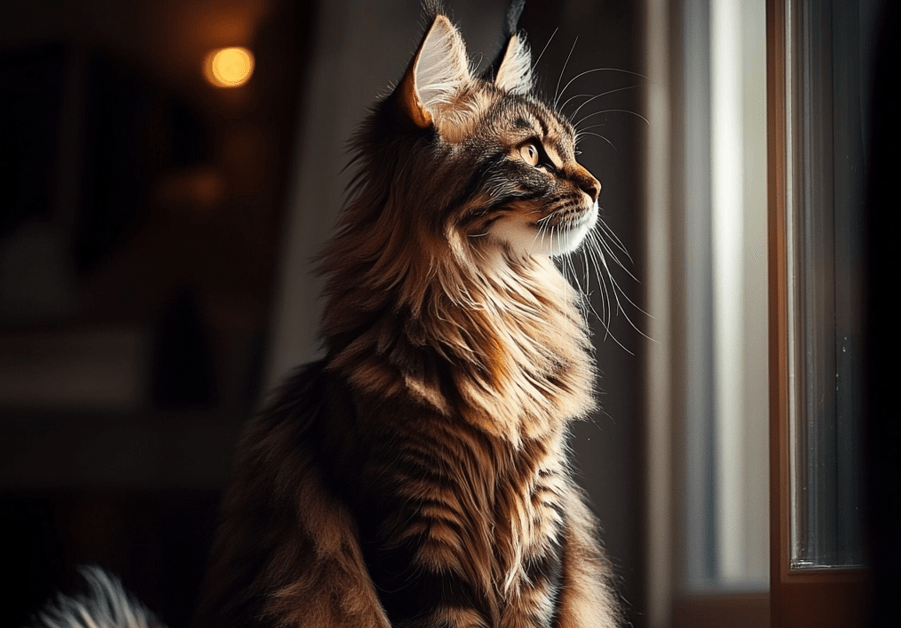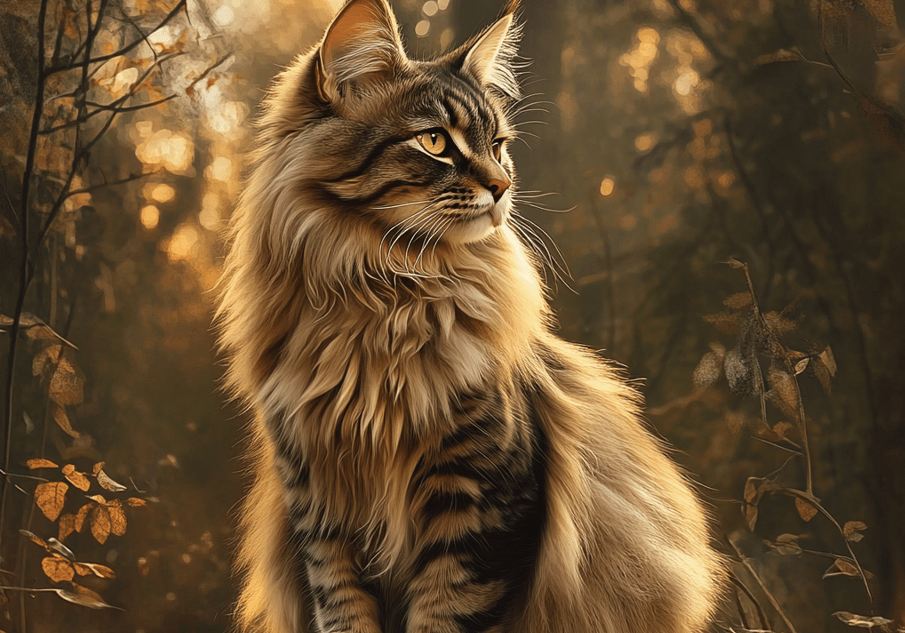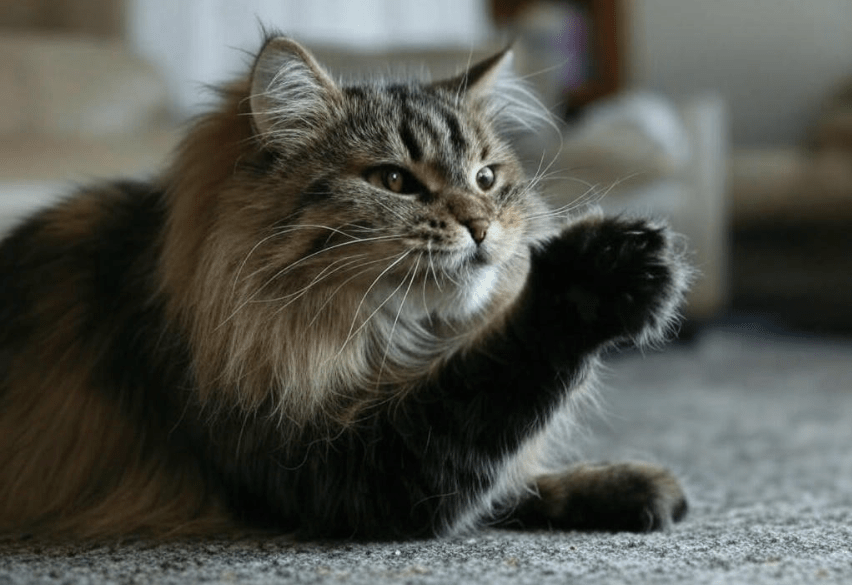
Maine Coons are known for their intelligence, playful nature, and dog-like personalities, making them perfect candidates for learning tricks. Teaching your Maine Coon simple tricks not only strengthens your bond but also provides mental stimulation and physical exercise. If you’re wondering how to teach Maine Coon simple tricks at home, this comprehensive guide will walk you through everything you need to know. From understanding your cat’s unique traits to mastering fun tricks like sitting, high-fiving, or even fetching, you’ll find actionable steps to make training a rewarding experience for both you and your feline friend.
Why Teach Your Maine Coon Tricks?
Maine Coons are one of the largest domesticated cat breeds, often weighing between 10-25 pounds, with tufted ears, bushy tails, and a friendly demeanor. Their intelligence and curiosity make them highly trainable compared to other cat breeds. Here’s why teaching tricks is beneficial:
Mental Stimulation: Maine Coons thrive on mental challenges. Learning tricks keeps their minds sharp and prevents boredom.
Physical Activity: Tricks like jumping or fetching encourage movement, helping maintain a healthy weight.
Strengthened Bond: Training sessions foster trust and communication between you and your cat.
Behavioral Benefits: Teaching tricks can redirect unwanted behaviors, like scratching furniture, into positive activities.
By incorporating training into your routine, you’ll tap into your Maine Coon’s natural abilities and create a more enriched environment.
Understanding Your Maine Coon’s Learning Style

Before diving into training, it’s essential to understand how Maine Coons learn. These cats are motivated by positive reinforcement, meaning they respond best to rewards like treats, praise, or play. Here are key factors to consider:
Intelligence: Maine Coons are quick learners but can be independent. Patience is crucial.
Attention Span: Keep sessions short (5-10 minutes) to maintain their focus.
Motivation: Identify what drives your cat—food, toys, or affection—and use it as a reward.
Personality: Some Maine Coons are outgoing, while others are more reserved. Tailor your approach to their temperament.
Observing your cat’s behavior will help you customize training methods that align with their preferences.
Preparing for Training: What You’ll Need
To teach Maine Coon simple tricks effectively, gather these supplies:
High-Value Treats: Use small, soft treats like freeze-dried chicken or tuna that your cat loves.
Clicker (Optional): A clicker can mark desired behaviors, making training more precise.
Target Stick or Pointer: A chopstick or laser pointer can guide your cat’s movements.
Toys: Feather wands or balls can serve as rewards or training tools.
Quiet Space: Choose a distraction-free area to help your cat focus.
Patience and Consistency: Training takes time, so stay calm and persistent.
Having these tools ready will set you up for success and make sessions enjoyable.
Step-by-Step Guide to Teach Maine Coon Simple Tricks
Here’s a detailed breakdown of how to teach your Maine Coon five simple tricks: sitting, high-fiving, coming when called, fetching, and spinning. Each trick builds on basic training principles and can be adapted to your cat’s pace.
Trick 1: Sit
Teaching your Maine Coon to sit is a foundational trick that paves the way for more complex behaviors.
Hold a Treat Above Their Head: Position a treat just above your cat’s nose, slightly out of reach.
Move the Treat Back: Slowly move the treat toward their tail. As their head tilts up, their bottom should naturally lower to the ground.
Reward the Sit: The moment their bottom touches the floor, say “Sit,” click (if using a clicker), and give the treat.
Add a Cue: Once they consistently sit, introduce a verbal cue like “Sit” or a hand signal before moving the treat.
Practice Regularly: Repeat 5-10 times per session, gradually phasing out the treat lure.
Tip: If your Maine Coon jumps for the treat, lower it closer to their nose and move it more slowly.
Trick 2: High-Five
A high-five is a fun, interactive trick that showcases your Maine Coon’s charm.
Encourage Paw Lifting: Hold a treat in your closed hand near your cat’s paw. When they paw at your hand, click and reward.
Raise Your Hand: Gradually hold your hand higher, encouraging them to lift their paw to touch it.
Introduce the Cue: Say “High-five” as they touch your hand, then reward immediately.
Refine the Motion: Reward only when they touch your hand with a clear paw lift, not a swipe.
Fade Out Treats: Over time, use praise or a toy instead of treats to reinforce the behavior.
Tip: Maine Coons have large paws, so be patient if they’re initially clumsy with this trick.
Trick 3: Come When Called
Teaching your Maine Coon to come when called is both practical and impressive.
Start Close: Call your cat’s name followed by “Come” in an excited tone while holding a treat a few feet away.
Reward Movement: When they move toward you, click and reward, even if it’s just a step.
Increase Distance: Gradually call them from farther away, rewarding each successful approach.
Practice in Different Rooms: Once they’re reliable, practice in various environments to generalize the behavior.
Use Real-Life Rewards: Occasionally reward with playtime or affection instead of treats.
Tip: Maine Coons are social, so an enthusiastic tone often works better than a stern command.
Trick 4: Fetch
Maine Coons’ dog-like tendencies make fetching a natural fit for many.
Introduce a Toy: Use a small ball or toy your cat enjoys chasing. Toss it a short distance.
Encourage Retrieval: When they pick up the toy, call them back with an excited tone and a treat.
Reward the Return: When they bring the toy closer, click and reward, even if they don’t drop it.
Teach Dropping: Hold a treat near their mouth to encourage them to release the toy, saying “Drop.”
Build Consistency: Gradually require them to bring the toy all the way back before rewarding.
Tip: If your cat loses interest, try a different toy or keep sessions short and exciting.
Trick 5: Spin
A spin is a visually appealing trick that’s surprisingly easy to teach.
Lure with a Treat: Hold a treat near your cat’s nose and slowly move it in a circle around their head.
Reward Partial Turns: When they follow the treat and turn even slightly, click and reward.
Complete the Circle: Gradually lure them into a full 360-degree spin before rewarding.
Add a Cue: Say “Spin” as they complete the circle, pairing the word with the action.
Practice Both Directions: Teach spinning in both directions to keep things engaging.
Tip: Use a target stick if your Maine Coon struggles to follow the treat in a smooth circle.
Training Tips for Success
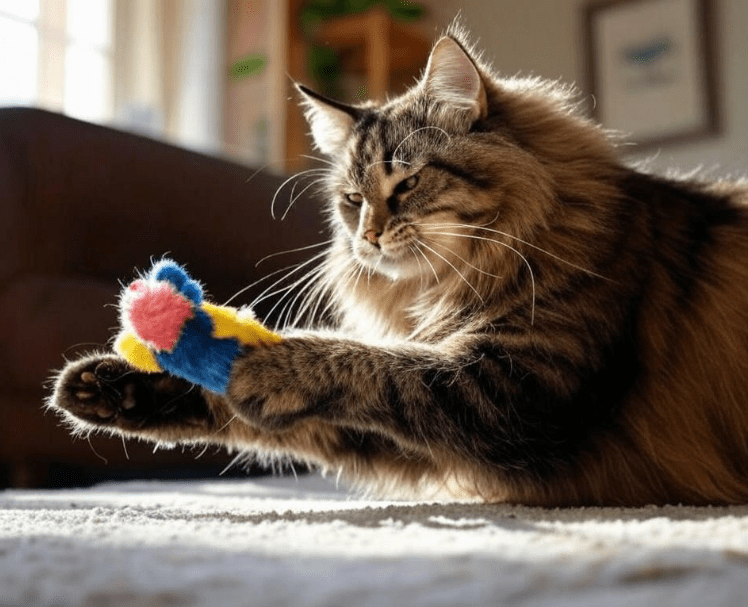
To ensure your Maine Coon masters these tricks, follow these best practices:
Keep Sessions Short: Aim for 5-10 minutes, 2-3 times daily, to avoid overwhelming your cat.
Use Positive Reinforcement: Never punish or scold during training, as it can discourage learning.
Be Consistent: Use the same cues and rewards to avoid confusion.
End on a High Note: Finish each session with a successful trick to keep your cat motivated.
Adapt to Their Mood: If your Maine Coon seems uninterested, try again later or adjust the reward.
Maine Coons are sensitive to their environment, so a calm, positive approach yields the best results.
Common Challenges and How to Overcome Them
Training a Maine Coon isn’t always smooth sailing. Here are common issues and solutions:
Lack of Interest: If your cat ignores treats, try a higher-value reward like tuna or a favorite toy. Ensure they’re hungry before sessions.
Distractions: Train in a quiet room, closing doors and minimizing noise. Gradually introduce distractions as they improve.
Inconsistent Responses: Revisit earlier steps and reinforce the behavior with more frequent rewards.
Overexcitement: If your Maine Coon gets too playful, take a break and resume when they’re calmer.
Slow Progress: Every cat learns at their own pace. Break tricks into smaller steps and celebrate small wins.
Patience and observation will help you troubleshoot and keep training on track.
Advanced Tricks to Explore
Once your Maine Coon masters simple tricks, you can progress to more advanced ones:
Jump Through a Hoop: Use a hula hoop or homemade ring to teach jumping on command.
Roll Over: Lure your cat into rolling by guiding a treat from their nose to their side.
Play Dead: Combine “lie down” and “stay” to create a dramatic trick.
Ring a Bell: Teach your cat to paw a bell for attention or as a signal.
Weave Through Legs: Guide them to walk in a figure-eight around your legs.
These tricks build on the foundation of simple commands and showcase your Maine Coon’s intelligence.
Maintaining a Training Routine
To keep your Maine Coon engaged long-term, integrate training into their daily routine:
Incorporate Play: Use tricks as part of playtime to make learning fun.
Vary Tricks: Rotate between tricks to prevent boredom.
Introduce New Challenges: Gradually increase difficulty or add new tricks.
Reward Beyond Treats: Use praise, petting, or play to maintain motivation.
Monitor Health: Ensure your cat is physically capable of performing tricks, especially as they age.
A consistent routine keeps your Maine Coon mentally and physically active.
The Role of Diet and Health in Training
A healthy Maine Coon is more likely to engage in training. Consider these factors:
Balanced Diet: Feed high-quality cat food to support energy and focus. Avoid overfeeding treats during training.
Hydration: Ensure fresh water is always available, as dehydration can affect concentration.
Regular Vet Checkups: Rule out health issues like arthritis or dental problems that could hinder training.
Weight Management: Maine Coons are prone to obesity, so monitor their weight to keep them agile.
Consult your vet if you notice changes in your cat’s behavior or training performance.
Why Maine Coons Excel at Learning Tricks
Maine Coons stand out for their trainability due to their unique traits:
Social Nature: They enjoy interacting with humans, making them eager to please.
Problem-Solving Skills: Their curiosity drives them to figure out tasks.
Physical Agility: Their large, muscular bodies allow them to perform dynamic tricks.
Vocal Communication: Maine Coons often “talk” with chirps and trills, helping you gauge their engagement.
Leveraging these traits makes training both effective and enjoyable.
Conclusion
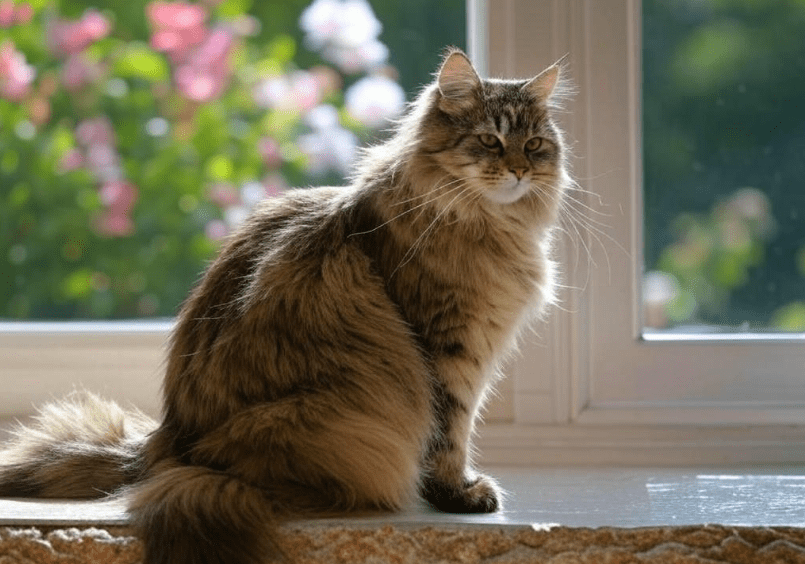
Teaching your Maine Coon simple tricks at home is a rewarding journey that enhances your bond and enriches your cat’s life. By using positive reinforcement, understanding your cat’s learning style, and practicing patience, you can teach Maine Coon simple tricks like sitting, high-fiving, fetching, coming when called, and spinning. With consistency and creativity, your Maine Coon can even progress to advanced tricks, showcasing their intelligence and charm. Start with short, fun sessions, adapt to your cat’s needs, and celebrate every milestone. This guide provides everything you need to make training a success, so grab some treats and get started today!

